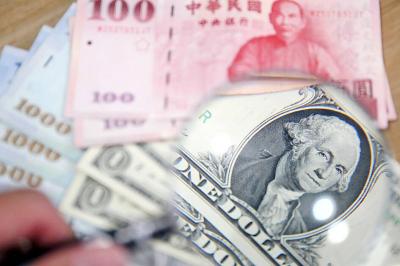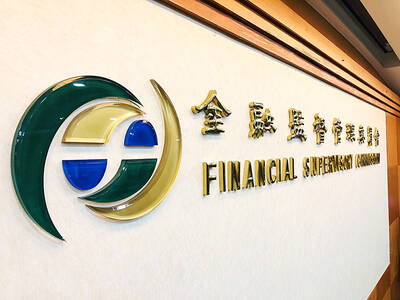Mid-tier Chinese banks are increasingly using complex instruments to make new loans and restructure existing loans that are then shown as low-risk investments on their balance sheets, masking the scale and risks of their lending to China’s slowing economy.
The size of this “shadow loan” book rose by a third in the first half of last year to an estimated US$1.8 trillion, equivalent to 16.5 percent of all commercial loans in China, a UBS analysis shows. For smaller banks, the rate is much faster.
This growing practice, which involves financial structures known as directional asset management plans (DAMPs) or trust beneficiary rights (TBRs), comes at a time when some mid-tier lenders, under pressure from China’s slowest economic growth in 25 years, are already delaying the recognition of bad loans.
“These are now the fastest growing assets on the balance sheets of most listed banks, excluding the Big Five, not just in percentage terms, but absolute terms,” said UBS financial institutions analyst Jason Bedford, a former bank auditor in China who focuses on the issue. “The concern is that the lack of transparency and miscategorization of credit assets potentially hide considerable non-performing loans.”
To provide a buffer against tough times, banks are required to set aside capital against their credit assets — the riskier the asset, the more capital must be set aside, earning them nothing.
Loans typically carry a 100 percent risk weighting, but these investment products often carry a quarter of that, so banks can keep less money in reserve and lend more.
Banks must also make provision of at least 2.5 percent for their loan books as a prudent estimate of potential defaults, while provisions for these products ranged between just 0.02 and 0.35 percent of the capital value at the main Chinese banks at the end of June last year, Moody’s Investors Service said in a note last month.
At China’s mid-tier lender Industrial Bank Co (興業銀行), for example, the volume of investment receivables doubled over the first nine months of last year to 1.76 trillion yuan (US$267 billion).
This is equivalent to its entire loan book — and to the total assets in the Philippine banking system, filings showed.
Investment receivables might include such benign assets as government bonds, but increasingly they include TBRs and DAMPs at mid-tier lenders.
At Evergrowing Bank (恆豐銀行), investment receivables reached 397 billion yuan in September last year, surpassing its loan book of 290 billion yuan. The bank said last year practically all of its investment receivables were DAMPs and TBRs.
China Zheshang Bank (浙商銀行), another smaller lender, also saw its investment receivables double over the same period, the bank’s prospectus to sell shares in Hong Kong shows.
Zhang Changgong (張長弓), the bank’s deputy governor, said banks were increasingly becoming return-seeking asset managers, not mere lenders.
“In the past banks [made loans and] held assets. Now banks manage assets,” he said.
The rapid growth of investment receivables, from less than US$300 billion in 2012, comes despite a decision in 2014 by China’s banking regulator to restrict purchase of TBRs and DAMPs under repurchase agreements in the interbank market, in a move to restrict the growth of these assets.
However, DAMPs and TBRs soon reappeared on bank balance sheets under the line “investment receivables.”
The China Banking Regulatory Commission is paying close attention to investment receivables, officials said.
China Guangfa Bank’s (廣發銀行) Tianjin branch was fined last year for using its own funds to invest in a structured product that was providing US$1.5 billion yuan in financing to a real estate company to avoid loan recognition and proper provisioning, the commission said on its Web site.
The listing of Bank of Jinzhou (錦州銀行), another small Chinese lender, nearly derailed last year when it revealed in documents prepared for the share sale that it was exposed to troubled solar company Hanergy Holding Group Ltd (漢能控股集團), primarily through such products.
The bank subsequently sold off the bulk of its risk.
To structure these deals, a bank typically engages a friendly trust, securities, or asset management company to set up a financing arrangement for a bank client.
The bank then buys the beneficiary rights to the investment product using a special purpose vehicle. Typically, the originating bank assumes all risk should the borrower default.
“If the originating bank does not promise to pay from its own pocket should any default happen, no trust company would agree to collaborate,” said a senior executive at a Chinese mid-tier bank, who declined to be named.

The US dollar was trading at NT$29.7 at 10am today on the Taipei Foreign Exchange, as the New Taiwan dollar gained NT$1.364 from the previous close last week. The NT dollar continued to rise today, after surging 3.07 percent on Friday. After opening at NT$30.91, the NT dollar gained more than NT$1 in just 15 minutes, briefly passing the NT$30 mark. Before the US Department of the Treasury's semi-annual currency report came out, expectations that the NT dollar would keep rising were already building. The NT dollar on Friday closed at NT$31.064, up by NT$0.953 — a 3.07 percent single-day gain. Today,

‘SHORT TERM’: The local currency would likely remain strong in the near term, driven by anticipated US trade pressure, capital inflows and expectations of a US Fed rate cut The US dollar is expected to fall below NT$30 in the near term, as traders anticipate increased pressure from Washington for Taiwan to allow the New Taiwan dollar to appreciate, Cathay United Bank (國泰世華銀行) chief economist Lin Chi-chao (林啟超) said. Following a sharp drop in the greenback against the NT dollar on Friday, Lin told the Central News Agency that the local currency is likely to remain strong in the short term, driven in part by market psychology surrounding anticipated US policy pressure. On Friday, the US dollar fell NT$0.953, or 3.07 percent, closing at NT$31.064 — its lowest level since Jan.

The Financial Supervisory Commission (FSC) yesterday met with some of the nation’s largest insurance companies as a skyrocketing New Taiwan dollar piles pressure on their hundreds of billions of dollars in US bond investments. The commission has asked some life insurance firms, among the biggest Asian holders of US debt, to discuss how the rapidly strengthening NT dollar has impacted their operations, people familiar with the matter said. The meeting took place as the NT dollar jumped as much as 5 percent yesterday, its biggest intraday gain in more than three decades. The local currency surged as exporters rushed to

PRESSURE EXPECTED: The appreciation of the NT dollar reflected expectations that Washington would press Taiwan to boost its currency against the US dollar, dealers said Taiwan’s export-oriented semiconductor and auto part manufacturers are expecting their margins to be affected by large foreign exchange losses as the New Taiwan dollar continued to appreciate sharply against the US dollar yesterday. Among major semiconductor manufacturers, ASE Technology Holding Co (日月光), the world’s largest integrated circuit (IC) packaging and testing services provider, said that whenever the NT dollar rises NT$1 against the greenback, its gross margin is cut by about 1.5 percent. The NT dollar traded as strong as NT$29.59 per US dollar before trimming gains to close NT$0.919, or 2.96 percent, higher at NT$30.145 yesterday in Taipei trading